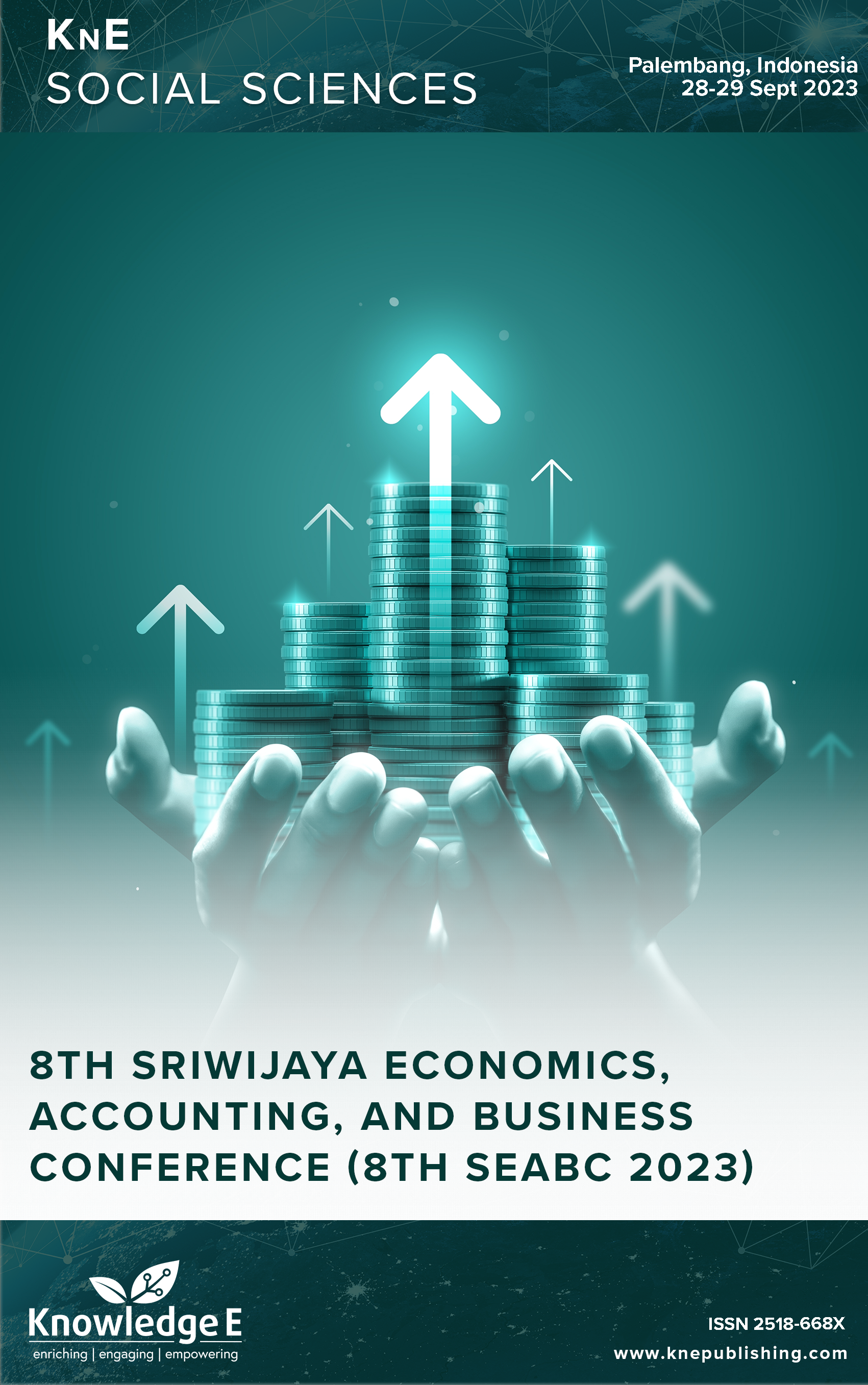Text Analytics on Regulation of Cryptocurrency
DOI:
https://doi.org/10.18502/kss.v9i14.16140Abstract
This paper presented the views of Malaysians regarding their perception of cryptocurrency. Data were collected through interviews with 59 existing and potential users of cryptocurrency. Text analytics through keyword extraction and content analysis on the responses from the survey were then performed. Keywords on the question related to the regulation of cryptocurrency included “Government should”, “Should regulate”, and “Money laundering”. Keywords such as “Government should”, “Should issue”, and “Regulatory regime” appeared for the question related to whether the government should develop a cryptocurrency regulatory regime. On issuing their own cryptocurrency, 49% of the respondents supported it, while 42% were against such a move. 88% of the respondents felt that the government should not ban cryptocurrency transactions. For the question related to suggestions to overcome issues associated with cryptocurrency, keywords such as “financial system”, “privacy seriously”, and “enhance financial” were reported. This paper adds to the body of knowledge on cryptocurrency by shedding light on the regulation landscape in an emerging market. In view of the increased usage of cryptocurrency, the public should be educated, and relevant bodies should establish regulations to minimise possible related illegal activities while developing a cryptocurrency-friendly regulatory regime.
Keywords: cryptocurrency, text analytics, regulation, Malaysia, fintech
References
Bank Negara Malaysia. Bank Negara Malaysia issues policy document for digital currencies. 2018.
Financial Action Task Force. Guidelines for a risk-based approach - virtual currencies. 2015.
Al-Amri R, Zakaria NH, Habbal A, Hassan S. Cryptocurrency adoption: current stage, opportunities, and open challenges. International Journal of Advanced Computer Research. 2019;9(44):293–307. DOI: https://doi.org/10.19101/IJACR.PID43
European Central Bank. Virtual currency schemes. Frankfurt; 2012.
Bank Negara Malaysia. Anti-Money Laundering, Countering Financing of Terrorism and Targeted Financial Sanctions for Financial Institutions (AML/CFT and TFS for FIs). 2019.
Bank Negara Malaysia. BNM and SC’s Joint Response on ‘Policy Confusion over Cryptocurrencies’. 2020.
Bank Negara Malaysia. Our Role. Kuala Lumpur; 2020.
Miner G, Delen D, Hill T, et al. Practical Text Mining and Statistical Analysis for Nonstructured Text Data Applications. Academic Press; 2012.
Yap BW, Abdullah N, Abdul-Rahman S, Loong Peng Tan M. Text Mining And Sentiment Analysis On Reviews Of Proton Cars In Malaysia. Malays J Sci Ser B Phys Earth Sci. 2018;37(2):137–53. DOI: https://doi.org/10.22452/mjs.vol37no2.5
Alrasheed H. Word synonym relationships for text analysis: A graph-based approach. PLoS One. 2021 Jul;16(7):e0255127. DOI: https://doi.org/10.1371/journal.pone.0255127
Kumar S, Kar AK, Ilavarasan PV. Applications of text mining in services management: A systematic literature review. International Journal of Information Management Data Insights. 2021;1(1):100008. DOI: https://doi.org/10.1016/j.jjimei.2021.100008
Thangaraj M, Sivakami M. Text Classification Techniques: A Literature Review. Interdisciplinary Journal of Information, Knowledge, and Management. 2018;13:117– 35. DOI: https://doi.org/10.28945/4066
Saunders B, Sim J, Kingstone T, Baker S, Waterfield J, Bartlam B, et al. Saturation in qualitative research: exploring its conceptualization and operationalization. Qual Quant. 2018;52(4):1893–907. DOI: https://doi.org/10.1007/s11135-017-0574-8
Bird S, Klein E, Loper E. Natural Language Processing with Python. Sebastopol: O’Reilly Media, Inc; 2009.
Kadhim A. An Evaluation of Preprocessing Techniques for Text Classification. Int J Comput Sci Inf Secur. 2018;16:22–32.
Ma S, Sun X, Wang Y, et al. Bag-of-Words as Target for Neural Machine Translation. In: Proceedings of the 56th Annual Meeting of the Association for Computational Linguistics (Volume 2: Short Papers). Stroudsburg, PA, USA: Association for Computational Linguistics, 2018, pp. 332–338. DOI: https://doi.org/10.18653/v1/P18-2053
Muller AC, Guido S. Introduction to Machine Learning with Python: A Guide for Data Scientists. 1st ed. Sebastopol: O’Reilly Media, Inc; 2017.
Dion-Schwarz C, Manheim D, Johnson PB. Terrorist Use of Cryptocurrencies: Technical and Organizational Barriers and Future Threats. 2019. https://doi.org/10.7249/RR3026. DOI: https://doi.org/10.7249/RR3026
Buang S. AMLA: An extremely powerful legislation.
Moorthy D. A Study on Rising Effects of Cryptocurrency in the Regulations of Malaysia Legal System. International Journal of Business. Economics and Law. 2018;15:35–41.
Hafez Y. BNM Has No Immediate Plan to Issue Central Bank Digital Currency. Bernama.com.
Paolo T, Tomaso A, Loriana P, et al. Banking Beyond Banks and Money: A Guide to Banking Services in the Twenty-First Century. Switzerland: Springer, Cham; 2016.
Nestarcova D. A Critical Appraisal of Initial Coin Offerings: Lifting the ‘Digital Token’s Veil’. Critical edition, 2019. DOI: https://doi.org/10.1163/9789004416581
Yussof SA, Al-Harthy A. Cryptocurrency as an Alternative Currency in Malaysia : issues and Challenges. Islam and Civilisational Renewal. 2018;9(1):48–65. DOI: https://doi.org/10.12816/0049515
Timbuong J. Terrorist Use of Cryptocurrencies: Technical and Organizational Barriers and Future Threats. The Star.
Rafay A. Money Laundering and Terrorism Financing in Global Financial Systems. Pakistan: IGI Global; 2021. https://doi.org/10.4018/978-1-7998-8758-4. DOI: https://doi.org/10.4018/978-1-7998-8758-4
Huang Y. Using Crypto-currencies to Measure Financial Activities and Uncover Potential Identities of Actors Involved. UC San Diego Electronic Theses and Dissertations.
An accountant’s guide to cryptocurrency [Internet]. Bdo.my. Available from: https://www.bdo.my/en-gb/insights/featured-insights/an-accountant%E2%80%99sguide- to-cryptocurrency29. TheWall: Profited from trading bitcoin? Find out if you need to pay taxes [Internet]. The Edge Malaysia. Available from: https://theedgemalaysia.com/article/thewall-profited-trading-bitcoin-find-out-if-youneed- pay-taxes
Pedrosa-Garcia JA, Almeida Y. Regulation of cryptocurrencies: Evidence from Asia and the Pacific. 2018. Available from: https://repository.unescap.org/handle/20.500.12870/1212
Koerhuis W, Kechadi T, Le-Khac NA. Forensic analysis of privacy-oriented cryptocurrencies. Forensic Sci Int Digit Investig. 2020;33:200891. DOI: https://doi.org/10.1016/j.fsidi.2019.200891
Xu JJ. Are blockchains immune to all malicious attacks? Financ Innov. 2016;2(1):25. DOI: https://doi.org/10.1186/s40854-016-0046-5
Ma F, Paiman N, Othman Z. Bitcoin and Cryptocurrency: Challenges, Opportunities and Future Works. The Journal of Asian Finance. Economics and Business. 2020;7:695–704. DOI: https://doi.org/10.13106/jafeb.2020.vol7.no8.695
Nazli IN, Ida M. Cryptocurrency: an insight into the Malaysian regulatory approach. Psychology. 2021;58(2):1645–52. DOI: https://doi.org/10.17762/pae.v58i2.2319
Chen Y. Blockchain tokens and the potential democratization of entrepreneurship and innovation. Bus Horiz. 2018;61(4):567–75. DOI: https://doi.org/10.1016/j.bushor.2018.03.006
Chowdhury MAM, Abdul Razak D. Dynamism and mechanism of digital currency (cryptocurrency) towards Islamic Finance. EJIF – European Journal of Islamic Finance. 2019;19:1–8.
Armstrong D, Hyde D, Thomas S. Blockchain and cryptocurrency: International Legal and Regulatory Challenges. London: Bloomsbury Professional; 2022. https://doi.org/10.5040/9781526521682. DOI: https://doi.org/10.5040/9781526521682
Zulhuda S, Sayuti A. Sayuti A binti. Whither Policing Cryptocurrency in Malaysia? IIUM Law Journal. 2017;25(2):179–96. DOI: https://doi.org/10.31436/iiumlj.v25i2.342
Bank Negara Malaysia. Making digital currencies transparent in Malaysia. 2017.
Rueckert C. Cryptocurrencies and fundamental rights. J Cybersecurity. 2019;5(1):1. DOI: https://doi.org/10.1093/cybsec/tyz004
Kshetri N. Blockchain’s roles in strengthening cybersecurity and protecting privacy. Telecomm Policy. 2017;41(10):1027–38. DOI: https://doi.org/10.1016/j.telpol.2017.09.003

